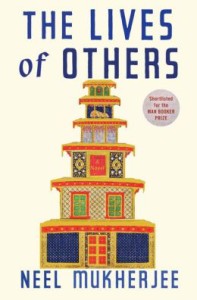
In exploring “the hidden inner cogs and wheels of the lives of others,” the Indian novelist Neel Mukherjee has written a book about the human toll of social change at its most extreme — and won himself the Man Booker Prize for 2014 in the process. “What could be more interesting than other people’s lives?” he asks. His answer approaches the outermost boundaries of human depravity.
In a traditional sense, the protagonist of The Lives of Others is Supravit Ghosh, a third-generation scion of a once immensely wealthy Calcutta family who spurns the pampered comforts of home to take up arms in the Naxalite uprising that has roiled portions of Eastern India for more than four decades. However, more broadly speaking, the central character is Supravit’s family, a squabbling collection of twenty people — three generations of Ghoshes and their loyal servants — crammed into the four stories of a mansion in South Calcutta. It is the decline and disintegration of this once-proud family during the violent years of the late 1960s and early 1970s that provides the energy throughout much of the novel.
The Lives of Others by Neel Mukherjee ★★★★★
Winner of the Man Booker Prize
Mukherjee’s insight about violent revolution emerges in high relief. As Supravit muses, “one thought became steadily inescapable: we could only poke the government into a kind of low-grade irritability, but never scale that up to something life-changing, something that would bring the system crashing down. All this hurling of bombs, burning of trams, headlines in newspapers — to what avail? The condition of the people remained unchanged. Life carried on as before, restored to its status quo, like the skin of water after the ripples from a thrown pebble have died away, as if the surface retained no memory of it.”
Supravit’s grandfather, the aging patriarch, cast off by his family from his rightful inheritance as co-owner of a jewelry empire, has built a second fortune in the paper industry, establishing his own dynasty on the other side of Calcutta. Like his grandson, the old man is seeking to foster a sort of social change, but through capitalism rather than revolution. However, now the days of Ghosh wealth and influence are fading as the many paper mills in the old man’s grip slip away, shut by labor unrest, a gathering Communist movement, and the loss of East Bengal to the newly independent state of Bangladesh.
A vivid, first-person account of a Naxalite terrorist
The Lives of Others follows Supravit from childhood through his career as a Naxalite terrorist in a vivid, first-person account. Others in the family are the subject of narration by an intrusive third person who gains access to their innermost fears and fantasies.
Not a single individual in the household, old or young, escapes the impact of India’s turbulent history. The pressures impinging on the family tear away at the bonds between husbands and wives, brothers and sisters, parents and offspring. This is a deeply disturbing story. Virtually no one emerges likable. In fact, it’s difficult not to conclude that Mukherjee doesn’t like any of his characters. He seems most deeply committed to exposing their faults.
Though it’s not an enjoyable experience to read this novel, it’s rewarding nonetheless, for its knowing portrait of life in India at a crucial turning-point in its history.
For additional reading
For another excellent novel about India that touches on similar themes, see A Burning by Megha Majumdar (Terrorism, corruption, and Hindu nationalism in India today).
This is one of the Good books about India, past and present that I’ve reviewed on this site.
If you enjoy reading history in fictional form, check out 20 most enlightening historical novels. And if you’re looking for exciting historical novels, check out Top 10 historical mysteries and thrillers.
You might also be interested in Top 10 great popular novels reviewed on this site.
And you can always find my most popular reviews, and the most recent ones, on the Home Page.


























